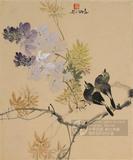宋四家墨寶 冊 宋蔡襄書尺牘
推薦分享
資源連結
連結到原始資料 (您即將開啟新視窗離開本站)後設資料
- 資料識別:
- 故書000235N000000002
- 資料類型:
- 類型:書法
- 型式:文字
- 著作者:
- 蔡襄
- 出版者:
- 數位化執行單位:國立故宮博物院
- 格式:
- 本幅 29.8x50.8公分、全幅 43.5x77.7公分
- 語言:
- 漢文
- 關聯:
- 石渠寶笈續編(養心殿),第二冊,頁1097 &*故宮書畫錄(第三卷),第一冊,頁141 &*故宮歷代法書全集,第十一冊,頁4-37、186-193&*1.何炎泉,〈蔡襄尺牘(陶生帖)〉,收入林柏亭主編,《大觀- 北宋書畫特展》(臺北:國立故宮博物院,2006年初版一刷),頁437- 440。 2.本社,〈宋蔡襄陶生帖〉,《故宮文物月刊》,第80期(1989年11月),頁1。 3.曹寶麟,〈蔡襄皇祐三年所作三帖考 之 陶生帖〉,《故宮文物月刊》,第130期(1994年1月),頁49-65。 4.何炎泉,〈蔡襄〈陶生帖〉與北宋散卓筆〉,《故宮文物月刊》,第280期(2006年7月),頁40-47。 &*蔡襄(1012-1067),字君謨,福建仙遊人。書法學虞世南、顏真卿,兼取晉人法。帖中用筆粗細變化較大,線條外緣爽朗俐落,末筆出鋒常露筆心,故推測書寫此札之筆應為健毫,外型短胖且含硬挺的心毫,接近記載中的散卓筆。北宋時以諸葛家散卓筆為最,初以粟鼠尾撚心,後經梅堯臣引進蒼鼠鬚後,受到杜衍、蔡襄等文人的喜愛。文中所稱「大佳物」的「散卓」,應指當時最負盛名的鼠鬚散卓筆。(20061206)&*Ts'ai Hsiang, style name Chün-mo, was a native of Hsien-yu, Fukien. In his practice of calligraphy, Ts'ai Hsiang studied the styles of Yü Shih-nan and Yen Chen-ch'ing of the T'ang dynasty while also going back to combine them with the virtues of Chin dynasty calligraphy. There is great variation in the thickness of the brushwork in this letter, the edges of the lines being sharp and clear, with the tip of the end stroke revealing the brush center. It suggests that the brush used in the writing of this letter was composed of stiff hair. Short and made of stiffer hairs in the center, it is similar to that of the “Brush of Leisurely Eminence” mentioned in records. In the Northern Sung, the “Brush of Leisurely Eminence” by the Chu-ko clan was considered as the best. At first, hairs from a chipmunk tail were twisted together to form the brush. Later, after Mei Yao-ch’en introduced the use of hamster whiskers, it became popular with such literati as Tu Yen and Ts'ai Hsiang. The “Leisurely Eminence” mentioned in this text as a “great object” probably refers to the popular and famous hamster-whisker “Brush of Leisurely Eminence” of the time.(20061206)
- 管理權:
- 國立故宮博物院
授權聯絡窗口
- 國立故宮博物院圖像授權、出版授權、影音資料授權-申請流程說明
http://www.npm.gov.tw/zh-TW/Article.aspx?sNo=03003061






